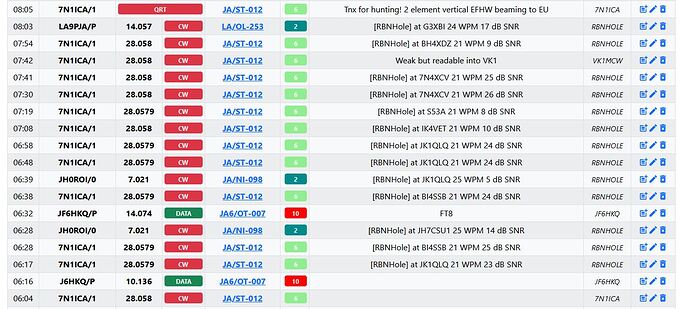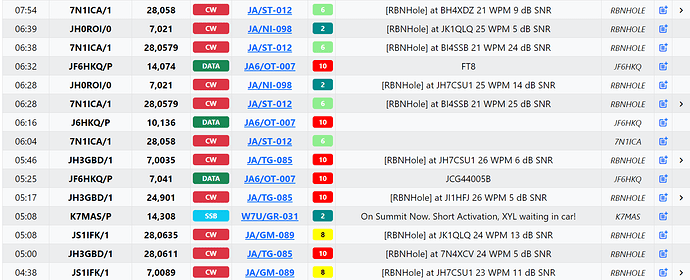I had to laugh at that one Paul. I have a property in the Midlands which has a smart meter and one up north in Northumberland that doesn’t. Must be my attempt to fit in with the locals. ![]()
I’ve made a complaint to the BBC about the article, specifically the implication that mobile phones don’t use radio. I asked them if they’d ever heard of radio aerials.
I’ve been on summits when it was so cold my lips didn’t want to work. Pressing the button was easy, actually speaking coherently was a challenge. ![]()
Chris
Does the BBC know how the BBC transmits their signals?
The BBC hasn’t transmitted their own signals for a long, long time. They sold off all the transmission equipment and broadcast sites to Crown Castle International in 1997.
I live well to the north of the smart-meter north-south divide line referred to in that BBC article. I know no one around here whose smart meter works properly. I think the “long-distance radio waves” it needs must be 6m/50MHz skywaves. No wonder they say, it’s magic if your meter works.
No doubt there are people on the staff who are very knowledgable, but they do not write the scripts. The wordsmiths probably had very little contact with science subjects and their scripts inevitably reflect this. They are not necessarily dim, they just had a different education. I find it is surprisingly common to find people who are amazed when told that their phones work by radio. It doesn’t really matter to them, though - as long as the dam’ things work, who cares how they work! ![]()
Going back to the original topic:
The current figures are;
CW…4665334
SSB…4184409
FM…1833229
Now FM is almost entirely confined to V/UHF, whilst CW and SSB is largely confined to the HF bands. It follows that on HF CW is a little more popular than SSB. I don’t have the figures, but I have a vague memory that ten years ago the difference between CW and SSB was somewhat larger than it is now, things have evened out…not that it matters, we get the job done to suit ourselves! ![]()
I remember when I was first learning about SOTA in 2020 the difference was substantial. I have a suspicion the tremendous increase in voice operators is a function of the growth of the program overall, particularly with newer licensed individuals looking to combine pre-existing hobbies with amateur radio. Lower barriers to entry and what not. This is a good thing ultimately.
The BBC transmitter department was privatised so they probably don’t know….
Ok but RBN is a way to spot yourself right, equivalent to using phone app, sotamat or direct sotawatch website. I don’t understand why making a difference between any spot and rbn spots ?
When I started this thread I was also thinking to include Japan with USA as CW users VS EU ssb majority.
Yes and maybe it also came with the release of all those tiny SSB rigs recently (xiegu, ic705, tx500, kx2 …).
The spots are automatic so you get more of them.
A picture is worth a thousand words…
That is a shot of this morning.
6.04 Kou 7N1ICA spots himself and calls CQ and operates
6.17 RBNhole spots 7N1ICA as it hears a CQ call that matches an alert and it’s over 10mins since 7N1ICA was lasted spotted
6.28 RBNhole spots 7N1ICA as it 10 mins since last automatic spot
6.38 RBNhole spots 7N1ICA as it 10 mins since last automatic spot
6.48 RBNhole spots 7N1ICA as it 10 mins since last automatic spot
6.58 RBNhole spots 7N1ICA as it 10 mins since last automatic spot
7.08 RBNhole spots 7N1ICA as it 10 mins since last automatic spot (now into EU)
7.19 RBNhole spots 7N1ICA as it 10 mins since last automatic spot (again into EU)
7.30 RBNhole spots 7N1ICA as it 10 mins since last automatic spot
7.41 RBNhole spots 7N1ICA as it 10 mins since last automatic spot
7.42 VK1MCW places a spot that 7N1ICA is workable in VK
7.54 RBNhole spots 7N1ICA as it 10 mins since last automatic spot
8.05 7N1ICA spots as now QRT
13 CW spots for 7N1ICA but only 2 from 7N1ICA and 1 from VK1MCW, the rest automatic.
Ding! Ding! Ding! We have a winner ![]()
What’s my prize?
I wont taunt you today ![]()
You get more spots but not more unique activators. A quick sorting on excel, as I did in a previous post, will show you that CW is predominent in US and JAPAN. Contrary to EU.
Screenshot from today:
I count 5 summits activations in Japan, 0 SSB.
Do you not think language may be an issue in this case?
I’m a lot further North than you but my smart meter works fine - the Zigbee communication with the in-house display is rubbish though
Yes it surely is. Then we can add it to the list of cultural differences, don’t you think ? ![]()
Language is actually a key factor. I live right on the border with Spain, and when I call CQ SOTA in English, I usually get maybe 10 QSOs from the usual few Spanish chasers. However, when a Spanish operator calls CQ SOTA in Spanish, they get hundreds of QSOs. Two days ago, EA5ER made 519 QSOs during his last activation. I could hear all of them, it was incredible, more like a WW contest, haha.
By the way, anobody knows whether the time between RBN spots be adjusted?
I find 10 minutes to be a bit too short. I would prefer 15 or even 20 minutes or so.


